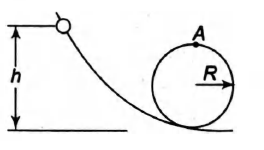Q.
A bead slides without friction around a loop-the-loop (Fig.). The bead is released from rest at a height $h = 3.50R$. How large is the normal force on the bead at point (A) if its mass is 50 g?

Work, Energy and Power
Solution:
